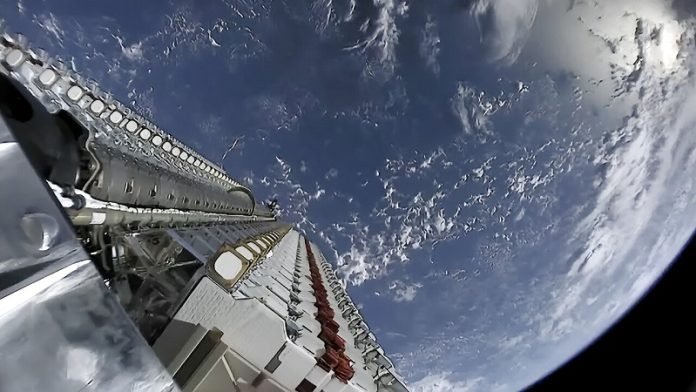
A recent study reveals a new environmental threat from satellite ‘megaconstellations.’
When old satellites re-enter Earth’s atmosphere and burn up, they release tiny particles of aluminum oxide. These particles are harmful because they damage Earth’s protective ozone layer.
The study, published in Geophysical Research Letters, found that aluminum oxides have increased eightfold between 2016 and 2022, and this trend is expected to continue as the number of low-Earth-orbit satellites increases.
The growing problem of aluminum oxides
In 1987, the Montreal Protocol successfully regulated the use of CFCs (chlorofluorocarbons) that were damaging the ozone layer.
This international agreement has helped shrink the ozone hole over Antarctica, with recovery expected within fifty years. However, the unexpected rise in aluminum oxides may delay this progress.
Currently, there are 8,100 objects in low Earth orbit, with 6,000 of them being Starlink satellites launched in recent years. Companies like SpaceX, Amazon, and others are rapidly increasing the number of small communication satellites to provide global internet coverage.
SpaceX alone has permission to launch another 12,000 Starlink satellites, with plans for up to 42,000 in the future. Other companies are planning constellations ranging from 3,000 to 13,000 satellites.
Internet satellites in low Earth orbit have a short lifespan of about five years. After this, companies must launch replacement satellites to maintain service, creating a cycle of continuous launches and increasing pollution. When satellites burn up upon reentry, they release aluminum oxides, which spark chemical reactions that destroy stratospheric ozone. The ozone layer is crucial as it protects Earth from harmful UV radiation.
Unlike CFCs, aluminum oxides do not directly react with ozone molecules.
Instead, they trigger destructive reactions between ozone and chlorine, depleting the ozone layer. Since aluminum oxides are not consumed in these reactions, they can continue to destroy ozone molecules for decades.
New findings on satellite pollution
Previous studies on satellite pollution focused on rocket fuel released during launches. This new study by researchers at the University of Southern California Viterbi School of Engineering is the first to provide a realistic estimate of pollution from satellites burning up in the atmosphere.
The research team, led by Joseph Wang, used advanced modeling techniques to understand how satellite materials change during reentry.
In 2022, reentering satellites increased atmospheric aluminum by 29.5% over natural levels. The study found that a typical 250-kilogram satellite with 30% of its mass being aluminum generates about 30 kilograms of aluminum oxide nanoparticles during reentry. Most of these particles are created in the mesosphere, 50-85 kilometers above Earth’s surface.
The study estimates that it takes up to 30 years for aluminum oxides to drift down to the stratosphere, where 90% of Earth’s ozone is located.
By the time all currently planned satellite constellations are in place, it is projected that 912 metric tons of aluminum will fall to Earth each year. This will release around 360 metric tons of aluminum oxides annually, a 646% increase over natural levels.
These findings highlight a significant and growing environmental challenge. As satellite megaconstellations continue to expand, it is crucial to address the potential impacts on the ozone layer and take steps to mitigate this new form of pollution.



